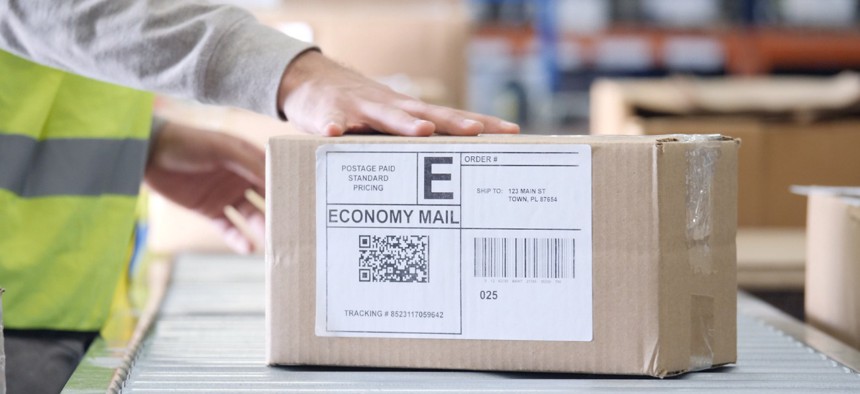
SDI Productions / istock
Postal Service Looks to Institute Holiday Surcharge as It Fights to Preserve Permanent Price Hike
USPS also finalized its plan to slow-down some mail delivery just two days before surcharge would take effect.
The U.S. Postal Service is looking to temporarily raise its prices for a period of nearly three months later this year, seeking to boost revenue during the busy holiday season.
USPS asked the Postal Regulatory Commission to approve a rate increase of between $0.25 and $5.00 per package, depending on the product and its weight. The mailing agency implemented similar price spikes during the 2020 holidays, with two key differences: First, USPS began the increased rate period more than two weeks later last year; and second, it did not previously impact retail mailers. This year, the higher prices would be in effect from Oct. 3 through Dec. 26 and would affect both individuals and commercial entities using the mail system.
Postal management said the expected heightened demand during its peak season would result in “extra handling costs,” which the new rates would help offset. It added the move would bring the Postal Service in line with competitors such as UPS and FedEx, who have also implemented holiday surge pricing during the COVID-19 pandemic. The Postal Regulatory Commission will review the proposed rates before they take effect.
The Postal Service has seen a dramatic spike in package volume since the start of the pandemic, though that surge has started to recede in recent months. Last year’s price surge, coupled with the large increase in package volume, enabled USPS to turn a profit of $318 million during the holiday season. Package volume soared by 40% in December 2020 compared to the same month in 2019, though the high demand, paired with employee shortages and reforms implemented by Postmaster General Louis DeJoy, led to unprecedented delivery delays.
USPS on Wednesday also finalized its proposal to slow down delivery, saying in a Federal Register filing the new windows would go into effect just two days before the temporary rate hike does. Postal management has said the changes will enable the agency to focus more on the growing package business, but the commission has raised concerns with the plans. In its filing, management defended itself against more than 130,000 overwhelmingly oppositional comments by arguing the changes would not drive users out of the mail and highlighting that most mail would be unaffected by them.
The Postal Service is simultaneously fighting in court to maintain permanent price increases that are set to go into effect Aug. 29. Using new authority the commission granted it last year, USPS is planning to increase First-Class mail by 6.8% and package services by 8.8%.
A coalition of several organizations representing large-scale mailers is seeking an immediate stay on those price increases before the U.S. Court of Appeals for the D.C. Circuit. A previous attempt at such a pause was rejected after the Postal Service successfully argued before a lower court the lawsuit against the authority to raise rates well above inflation was merely theoretical, as management had yet to propose any specific increases. Now that management has issued such a proposal and the commission has approved it, the mailers are renewing their push.
USPS and the Biden administration are now arguing the mailers should be seeking a stay on the specific rate increase rather than the broader rate-setting authority. The mailers pushed back on that argument in a rebuttal this week, saying the agency was trying to have it both ways and institute a “heads I win, tails you lose” position. They further said their members would suffer irreparable harm if the rates go into effect, as they could not recover the revenue they would lose in the interim even if the court ultimately sides in their favor. While USPS argued it needs the revenue from the higher rates immediately, the mailers said the agency has sufficient liquidity to at least sustain a temporary pause while the case plays out.
The court now has less than three weeks to rule on whether to allow the price hike to move forward.







